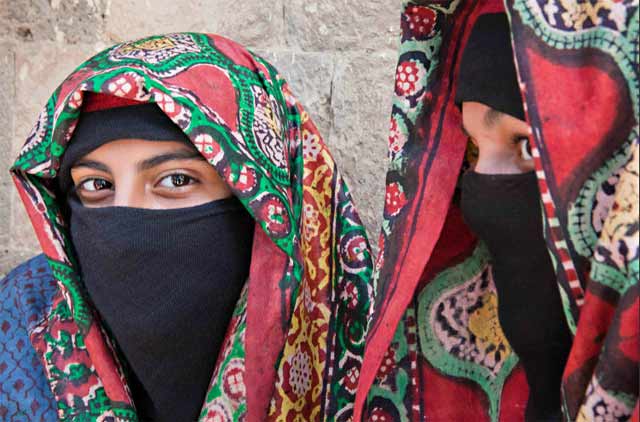
Yemeni Women in Traditional Clothing
When you travel to foreign lands, your experiences will take you far beyond just the beauty of the physical landscape. It may also include cultural differences. They may wear different clothing, eat with different utensils, and they may even think and act in a different manner. Some cultures will be similar to yours, while others are in complete contrast. No matter where you go, it’s an incredible opportunity to learn about the people and their culture, and it’s a wonderful opportunity to make photographic memories.
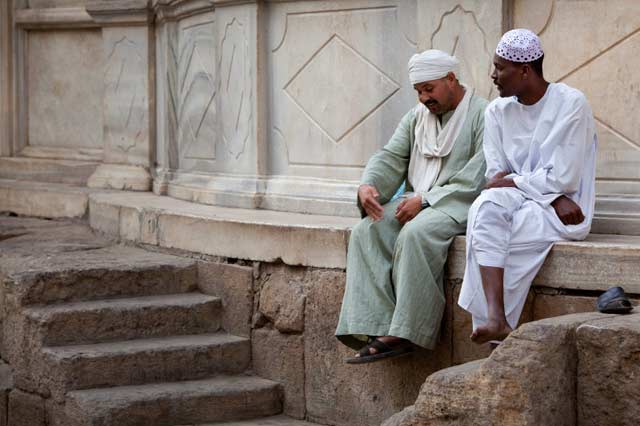
Early Morning in Cairo, Egypt
If you’re planning on an extended-stay in Middle Eastern countries, having an understanding of their ways of thinking and communicating will be important. For instance, I grew up in a so called “cold culture” and in my culture we were raised to be very direct – we say what we think! But in “hot cultures”, such as the Middle East, they take a different approach. You lie in order not to shame another person. Well, I may see that as lying, but the Arabs view it as honoring someone. So, we are different, but that doesn’t mean that our values are necessarily better or worse. Take some time to communicate with various people and ask questions about their culture, even when on short visits, and you’ll open the doors to learning and maybe even to new photographic possibilities.
Some cultural differences are very obvious, such as clothing or dining etiquette. In oriental countries, eating with chopsticks or a spoon is the way to go, while in northern Europe and the Americas, a fork and knife or fork, knife and spoon is customary. In India, they eat with their hands – it’s a tactile and mindful connection with their food. And here in Yemen, the use of the hands and flat bread as a scoop is to be expected.
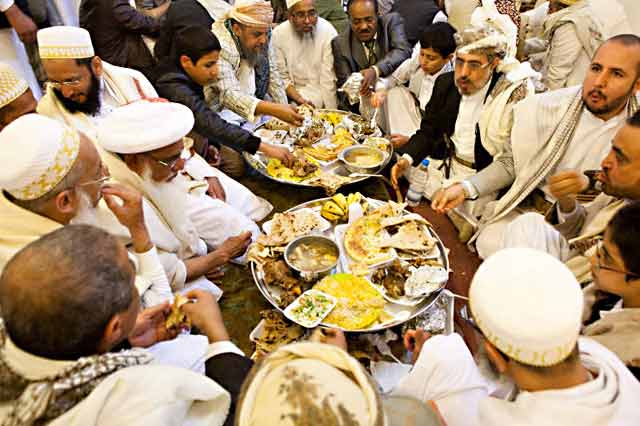
Indian and Yemeni Men Sharing a Meal
The countries of the Middle East have many things in common. The strongest common pillars of Middle Eastern society are Islam and Arabic. However, these Arab cultures are also quite different. Islam has many different sects. Arabic has a wide variety of dialects. Living conditions are different. The natural environments where people live are different. All these aspects create certain traditions and customs. How you should behave is different from place to place, even within the Middle East. At the same time there are some cultural aspects that apply more or less to the whole region, such as taking off your shoes when you enter a home.
So to have a better understanding, to travel with more ease and to make your visit pleasing, be sure to do your homework first or even ask questions when you arrive at your hotel.
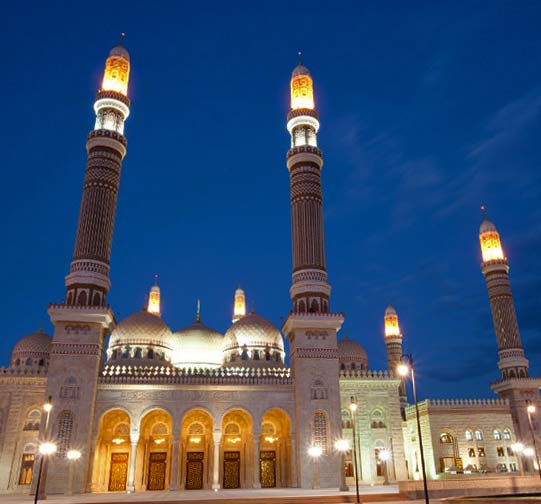
The Saleh Mosque in Sana’a, Yemen
In general there are certain subjects within the Middle East that you cannot photograph.
First: Military installations or any sites of strategic interests are prohibited. This includes government buildings. Don’t even try it, as you might end up in jail charged with spying. Although I may not officially be considered a photojournalist, my cameras and lenses do make officials in these countries suspicious. Is he a spy? Once I was held for quite some time at an airport and interrogated by several officials. In the end I had to show my photos, after which they let me go.
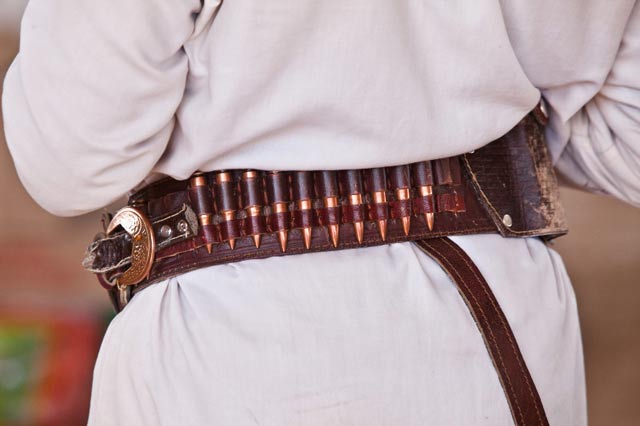
An Armed Tribesman
Second: In most countries it is fine to visit a mosque and take pictures inside. However, respect the Muslim culture and make sure you dress properly. In a few countries you cannot enter a mosque as a non-Muslim. And although this might be disappointing, respect that as well. There are enough other interesting subjects for you to photograph.
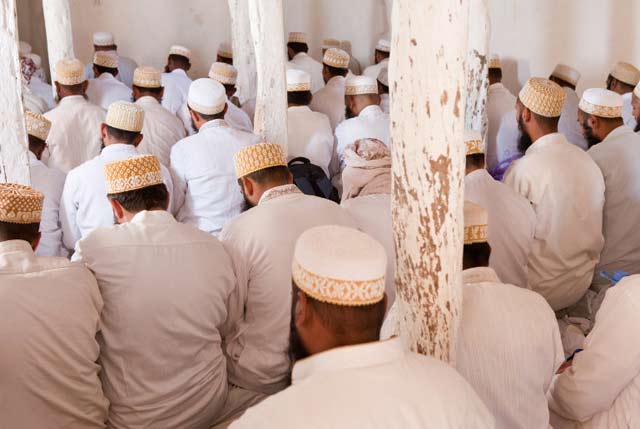
Praying in a Mosque in the Haraz Mountains, Yemen
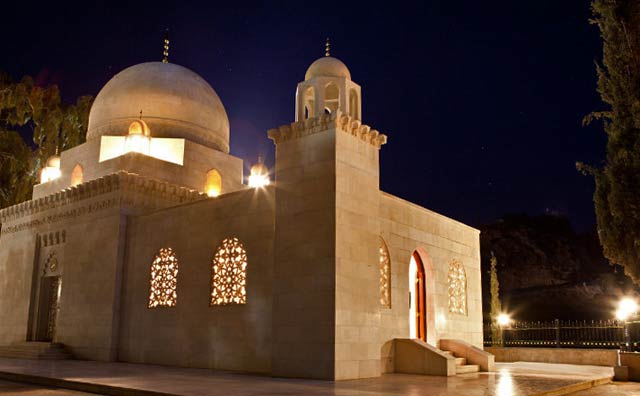
A Mausoleum: Non-Muslims Prohibited to Enter
Third: Muslim women cannot be photographed in most places – don’t even try. Well, you can try by asking permission, but I guarantee that in countries like Yemen 99% will say no. And if you try to do it in a sneaky fashion, well, first, that’s not very respectful, second, sneaky photos often don’t turn out to be your best photos, so why try, and third, someone might notice and then you’re in serious trouble. It is sometimes possible to photograph Muslim women, but usually only if you know them.
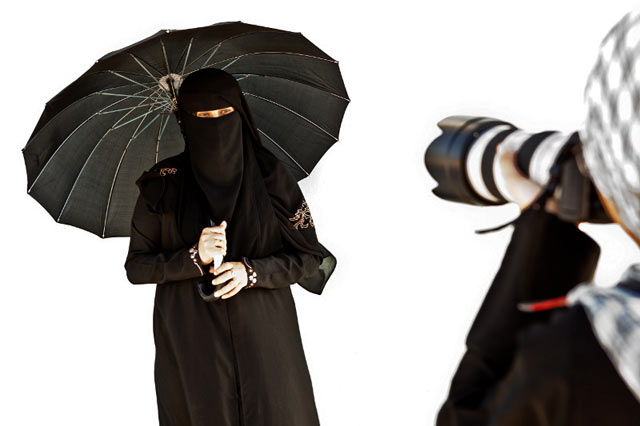
Photographing a Yemeni Woman
Fourth: Because Middle Eastern cultures are considered honor and shame cultures, it is better to avoid taking photos of subjects they consider to be shameful, such as rubbish. And although a goat in a dustbin makes a nice subject, you might want to wait until there are no people around.
In some countries it is pretty easy to take photos of the people, especially the children. They will even boldly ask you. They are fascinated by the camera and want the attention and to be part of “the show”. They get very excited and will immediately rush up to me, jumping up and down in front of my lens and trying to touch it. Tip: A big lens hood for your lenses will prevent many small fingers from touching the lens itself.
But how can you handle these children that want their picture taken? A large group photo usually doesn’t have great results, so in most cases I tell them I would love to make a photo of them, but one by one or with two to three subjects. I’ve created some very nice images, however it’s not an easy task, so be sure you’re up for all pushing and shoving that will occur as each child vies for the number one position. If you’re not up for it, just leave the area and find other interesting subjects.
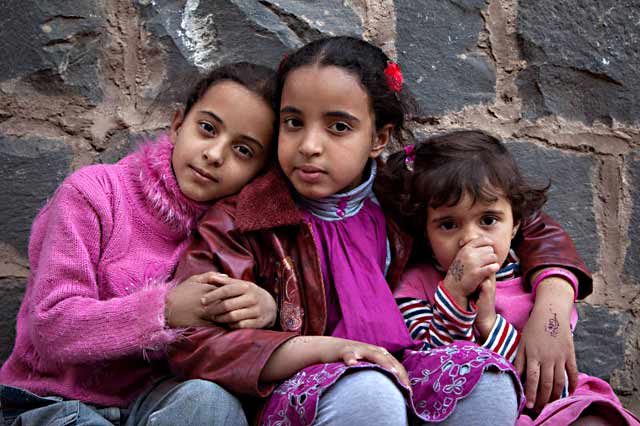
Children in Old Sana’a, Yemen
When you travel it is important to read and learn about the culture you’re going to visit.
Here are a few guidelines that can help you with your journey:
1. Learn some basic phrases in their language – hello, nice to meet you and goodbye, along with, “May I take a photo?” They will appreciate your efforts.
2. Learn what is appropriate when meeting and greeting people.
3. Know their eating and restaurant etiquette if totally different from your own. Just ask them or watch others and follow their lead.
4. Know how to dress if you’re visiting a religious institution.
5. Know or ask if there are any photographic taboos in the area.
6. Always ask first and be sensitive when you want to photograph people. You just might be surprised with their willingness to be photographed.
7. Smiles and respect will always go a long way.
8. You are a guest in their country and in their culture, so act accordingly.
Enjoy yourself and you’ll go home with stunning images.
by Maarten de Wolf
All text & photos: © 2013 Maarten de Wolf. All rights reserved.

Leave a Reply